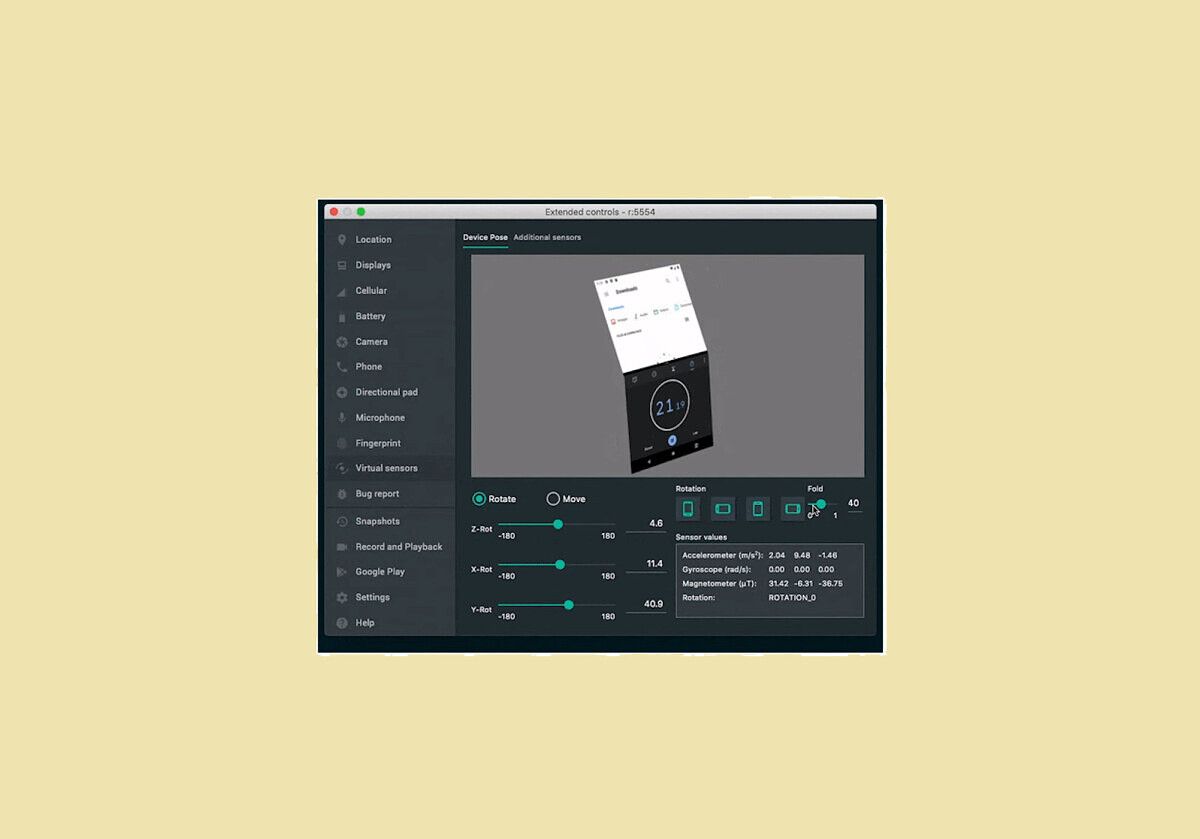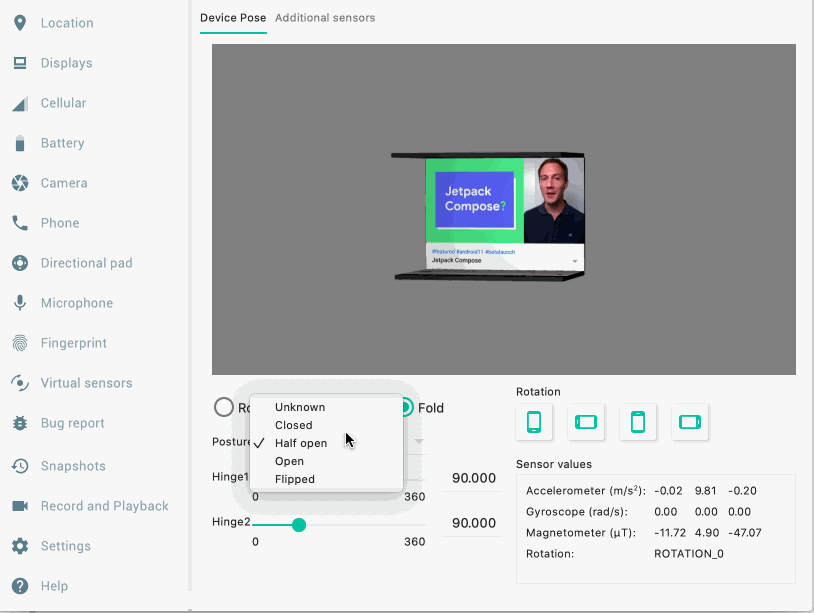The Android Emulator in Google's Android Studio IDE is getting a major update with improved support for foldable devices (via AndroidPolice). The feature requires an Android 11 system image and AVD configuration that have yet to be released, however.
At last year's Google I/O, Google updated the Android Emulator to include support for creating a virtual foldable device. Back in April, the company made it possible to create an Android Virtual Device (AVD) with freeform multi-window mode enabled. Alongside the Android 11 Beta release in June, Google teased an updated version of the Android Emulator that would bring extended support for foldables in the emulator featuring integration with the hinge sensor API and Jetpack Window Manager features. Now, Android Emulator version 30.0.26 adds support for a virtual hinge sensor and 3D view, provided you configure the foldable to run under a new Android 11 system image.
According to the release notes, the hinge sensor is enabled by default when the developer configures a virtual foldable device on top of a future Android 11 system image. Once configured, the emulator sends hinge angle sensor updates and posture changes to the guest. Existing foldable devices update the hinge sensor angle and posture when the developer presses the toolbar’s fold or unfold buttons.
The updated Android Emulator update also introduces cross-compilation from x86_64 to arm64 hosts, support for virtio-gpu host coherent blob resources, USB passthrough on Windows, the ability to hide the device frame for the current AVD, a toggle for meteredness support, and several bug fixes.
While foldable devices haven’t become mainstream, there are early signs they could be the next evolution of smartphone design. Samsung is pursuing the world of foldable devices with its Z Fold series. Microsoft has recently launched its dual-screen Android device called the Surface Duo. Meanwhile, Google has been prototyping foldable Pixel devices in the past, though there's no indication these projects are intended to evolve into consumer products. With improved developer tools in place, though, developers will have the opportunity to create apps that take advantage of these unique form factors.


